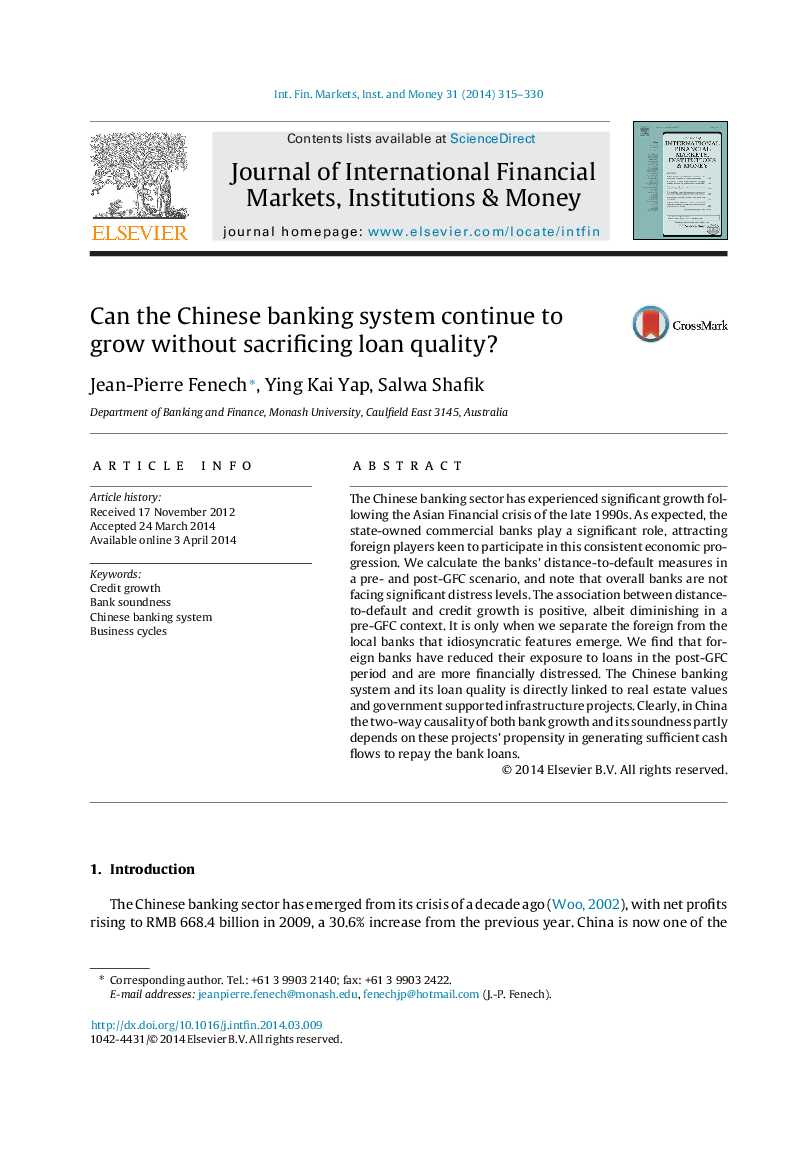| Article ID | Journal | Published Year | Pages | File Type |
|---|---|---|---|---|
| 7364934 | Journal of International Financial Markets, Institutions and Money | 2014 | 16 Pages |
Abstract
The Chinese banking sector has experienced significant growth following the Asian Financial crisis of the late 1990s. As expected, the state-owned commercial banks play a significant role, attracting foreign players keen to participate in this consistent economic progression. We calculate the banks' distance-to-default measures in a pre- and post-GFC scenario, and note that overall banks are not facing significant distress levels. The association between distance-to-default and credit growth is positive, albeit diminishing in a pre-GFC context. It is only when we separate the foreign from the local banks that idiosyncratic features emerge. We find that foreign banks have reduced their exposure to loans in the post-GFC period and are more financially distressed. The Chinese banking system and its loan quality is directly linked to real estate values and government supported infrastructure projects. Clearly, in China the two-way causality of both bank growth and its soundness partly depends on these projects' propensity in generating sufficient cash flows to repay the bank loans.
Related Topics
Social Sciences and Humanities
Economics, Econometrics and Finance
Economics and Econometrics
Authors
Jean-Pierre Fenech, Ying Kai Yap, Salwa Shafik,
